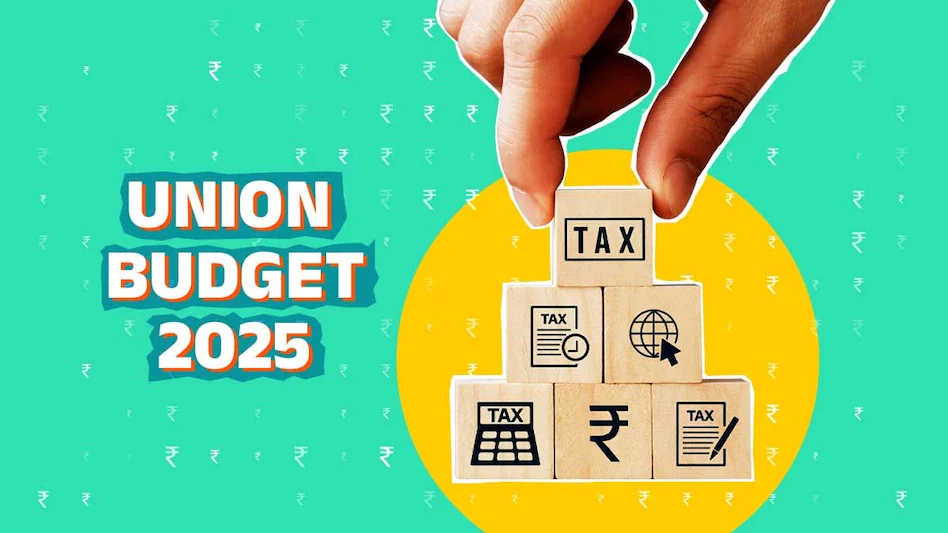The much-anticipated Union Budget 2025 was presented by Finance Minister Nirmala Sitharaman, bringing a series of financial reforms, tax reliefs, and strategic allocations. With an increase in the tax rebate to Rs 12 lakh, over one crore individuals will now fall into the no-tax bracket, a move aimed at boosting disposable income and consumer spending. This budget also prioritizes infrastructure development, digital transformation, and sustainability initiatives to align with long-term economic goals.
Key Announcements
- Income Tax Slabs: The new tax structure reduces burdens across income groups, encouraging savings and investments. The revised tax rates are:
- Rs 0-4 lakh: Nil
- Rs 4-8 lakh: 5%
- Rs 8-12 lakh: 10%
- Rs 12-16 lakh: 15%
- Rs 16-20 lakh: 20%
- Rs 20-24 lakh: 25%
- Above Rs 24 lakh: 30%
- The increase in tax rebate provides significant relief to the middle class, boosting disposable income and potential investment in real estate, mutual funds, and small businesses.
- Agricultural Reforms: The introduction of the Prime Minister Dhan-Dhaanya Krishi Yojana promises better infrastructure, market accessibility, and financial support for farmers. However, the overall budget for the Ministry of Agriculture and Farmers’ Welfare has only marginally increased by 4% to Rs 1.37 lakh crore. While some experts appreciate the focus on agri-tech and modern farming techniques, farmer unions express concerns about the adequacy of allocations for subsidies and procurement.
- Public Spending & Welfare: There has been no reduction in capital expenditure, ensuring continued investments in infrastructure, highways, railways, and urban development. However, social welfare sectors, including education, healthcare, and rural development, have seen minimal allocation increases, sparking criticism from the Opposition. The government’s push for digital inclusion and fintech adoption aims to bring efficiency to welfare distribution but has raised concerns about accessibility in remote areas.
- Manufacturing & Industry: The Production-Linked Incentive (PLI) scheme has received an additional Rs 30,000 crore boost, encouraging domestic production in sectors like electronics, pharmaceuticals, and textiles. This move aims to generate employment and reduce dependency on imports, positioning India as a global manufacturing hub.
- Green Initiatives & Sustainability: The budget introduces new tax benefits for electric vehicle (EV) buyers, solar energy adoption, and sustainable urban development. The government has earmarked Rs 50,000 crore for renewable energy projects, reinforcing India’s commitment to carbon neutrality and environmental sustainability.
Economic Implications
This budget aims to balance economic growth with fiscal prudence. While tax reliefs benefit the middle class, critics argue that the budget lacks substantial provisions for poverty alleviation and marginalized communities. The government’s focus remains on capital investments, infrastructure expansion, and incentivizing consumption-driven economic recovery. Financial analysts believe the tax reforms will encourage higher spending, stimulating market growth and employment generation.
Opposition’s Take
Opposition leaders claim the budget favors urban taxpayers and large corporations while neglecting rural development and welfare schemes for SCs, STs, and OBCs. Senior Congress leader P. Chidambaram highlighted that critical areas such as social welfare and employment guarantee schemes have seen stagnated allocations. Regional parties have also expressed concerns over the distribution of funds to states, citing an imbalance in allocations favoring industrial regions over agrarian states.
What This Means for You
For taxpayers, this budget brings financial relief, increased purchasing power, and investment opportunities. Salaried professionals, small business owners, and entrepreneurs stand to benefit from tax reductions and investment-friendly policies. For businesses, infrastructure growth and stable capital expenditure signal long-term economic expansion. However, concerns over limited social welfare expansion raise questions about inclusivity in economic development.
Additionally, the boost to digital payments, e-commerce, and fintech sectors opens new avenues for startups and investors. Young professionals can leverage tax incentives on savings, home loans, and retirement planning to secure financial stability.
Conclusion
The Union Budget 2025 sets the stage for a consumption-driven economy, prioritizing tax benefits and infrastructure development. While it aims to stimulate growth, its social impact remains debatable. The expansion of digital transactions, green initiatives, and PLI schemes reflect the government’s long-term vision for economic resilience and sustainability.
As industries adapt to these financial reforms, individuals must navigate the changing tax landscape to make the most of new opportunities. Staying informed about policy changes, investment trends, and economic strategies will be crucial in optimizing financial planning for the year ahead. The success of this budget will ultimately depend on its execution and the ability to balance economic growth with equitable development.
BY – JYOTHI



